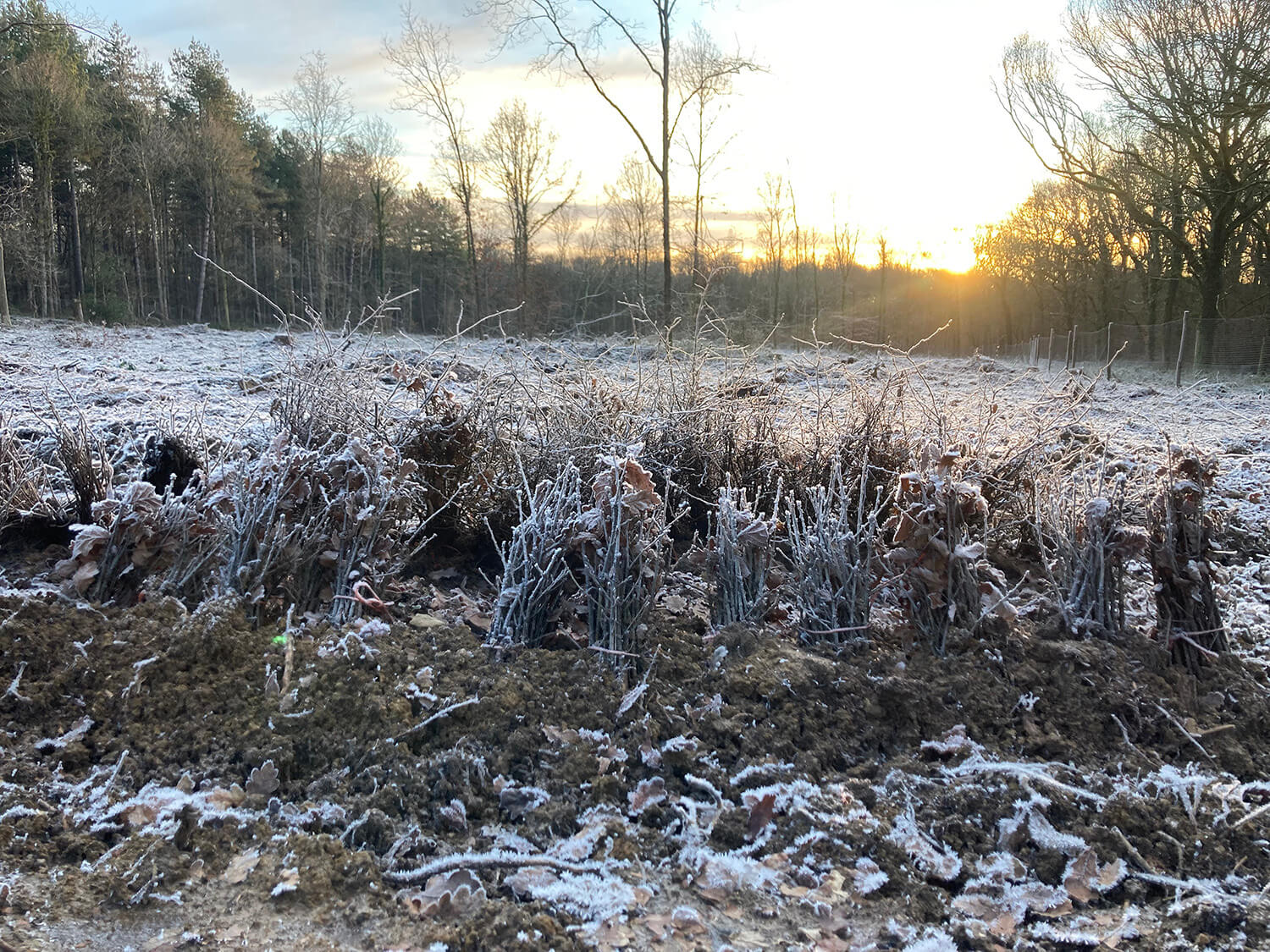Rose Uniacke supported the planting of 7,200 climate resilient trees across the UK in 2022-23
This year, Rose Uniacke has committed to plant another 7,200 climate resilient trees in partnership with GreenTheUK and the Royal Forestry Society. Having already planted the same number last year (view case study here), the total number of trees planted by Rose Uniake is now 14,400. Benefits of planting these trees could increase each woodland's resilience to pests, diseases and/or climate change as well as enriching local biodiversity and sequestering carbon. In this report, learn more about the different tree species planted by Rose Uniacke.
.svg)
Tree Species Planted:
32 trees planted in Hampshire
The trees in this Hampshire woodland have been badly affected by the deadly tree disease Ash Dieback. To make matters worse, the rest of the woodland is dominated by beech trees, which are one of the species that are particularly susceptible to drought. Occurrences of droughts in the UK are expected to increase as the Climate Emergency progresses and so non-drought resistant strains of beech trees may not survive. The dead and dying trees in this woodland will be replaced with a mix of conifers and broadleaf trees that have been chosen specifically for their resistance to disease and climate change.
1,000 trees planted in West Sussex
This woodland in the South Downs National Park has restored with a mix of native broadleaved trees. Over the last 50 years, Dutch elm disease has killed millions of elm trees in the UK. As part of this project, disease resistant elm trees have been planted to help replace some of the trees that were lost from the landscape. Elms, alongside other broadleaf trees, such as juniper trees, will provide food and shelter for local wildlife.
1,000 trees planted in County Down
The trees in this woodland have been underplanted with beech, hazel, oak and cherry to increase the diversity of different tree species and benefit local wildlife. The woodland owner is also experimenting by planting a hybrid larch, which they expect to be more resilient to extreme weather brought about by climate change.
1,000 trees planted in County Antrim
The aim for this woodland is to diversify the different types of trees in a historic lowland landscape. Some old trees, such as timber conifers and broadleafs, have been removed as they were in poor health and will make way for new trees. The owner has kept some of the older trees to retain leafy canopy habitats for local wildlife. The new trees have been planted amongst older trees, which will benefit wildlife as there will always be trees of different types, sizes and ages in the woodland, giving a choice of habitats for woodland plants and animals.
1,540 trees planted in West Sussex
Norway spruce has been felled to make way for a mix of native broadleaf trees. These trees will help to provide shelter, food and habitats for local wildlife. Trees such as hazel and crab apple will provide nuts and fruit for mammals and birds. Some of the trees (such as guelder rose) are especially good for pollinating insects. In 100 years (or more) some of the oak trees that are planted could be felled to provide sustainable building materials.
2,628 trees planted in Berwickshire
Windstorms are becoming increasingly common in the UK as a direct result of rapid climate change. The trees in this woodland were lost during Storm Arwen in 2021. They have been replaced with oak and beech trees with smaller native trees being planted around the woodland edge. These smaller trees will provide habitats for local wildlife and also direct windflow up and over the young oak and beech while they become established.

UN's Sustainable Development Goals
As a GreenTheUK partner, you support projects that are in line with the UN Sustainable Development Goals.

Take urgent action to combat climate change and its impacts.

Sustainably manage forests, combat desertification, halt and reverse land degradation, halt biodiversity loss.

















































































.JPG)
.JPG)
.JPG)
.JPG)
.JPG)
.JPG)
.JPG)
.JPG)
.JPG)
.jpg)
.jpg)
.jpg)
.jpg)
.jpg)
.jpg)
.jpg)
.jpg)
.jpg)
.jpg)
.jpg)
.jpg)
.jpg)
.jpg)
.jpg)

.JPG)
.JPG)
.JPG)
.JPG)
.JPG)
.JPG)
.JPG)
.JPG)